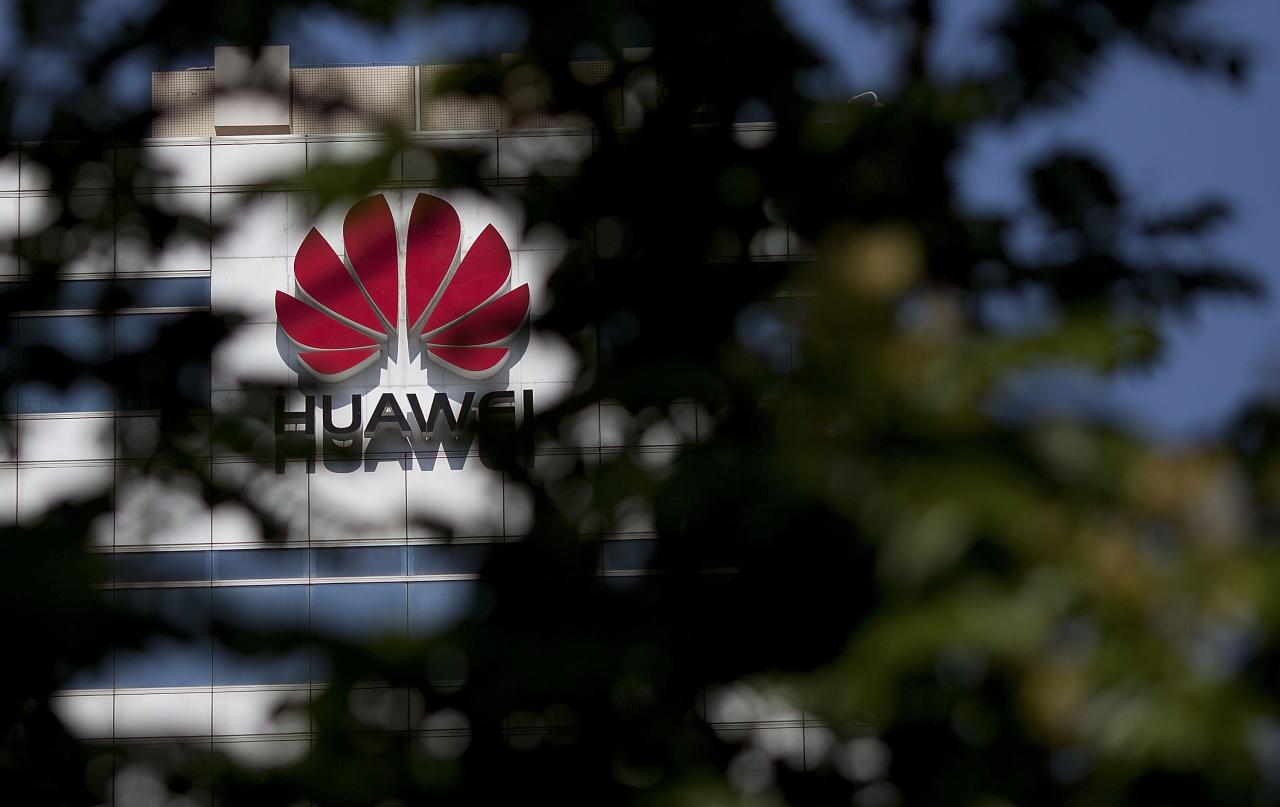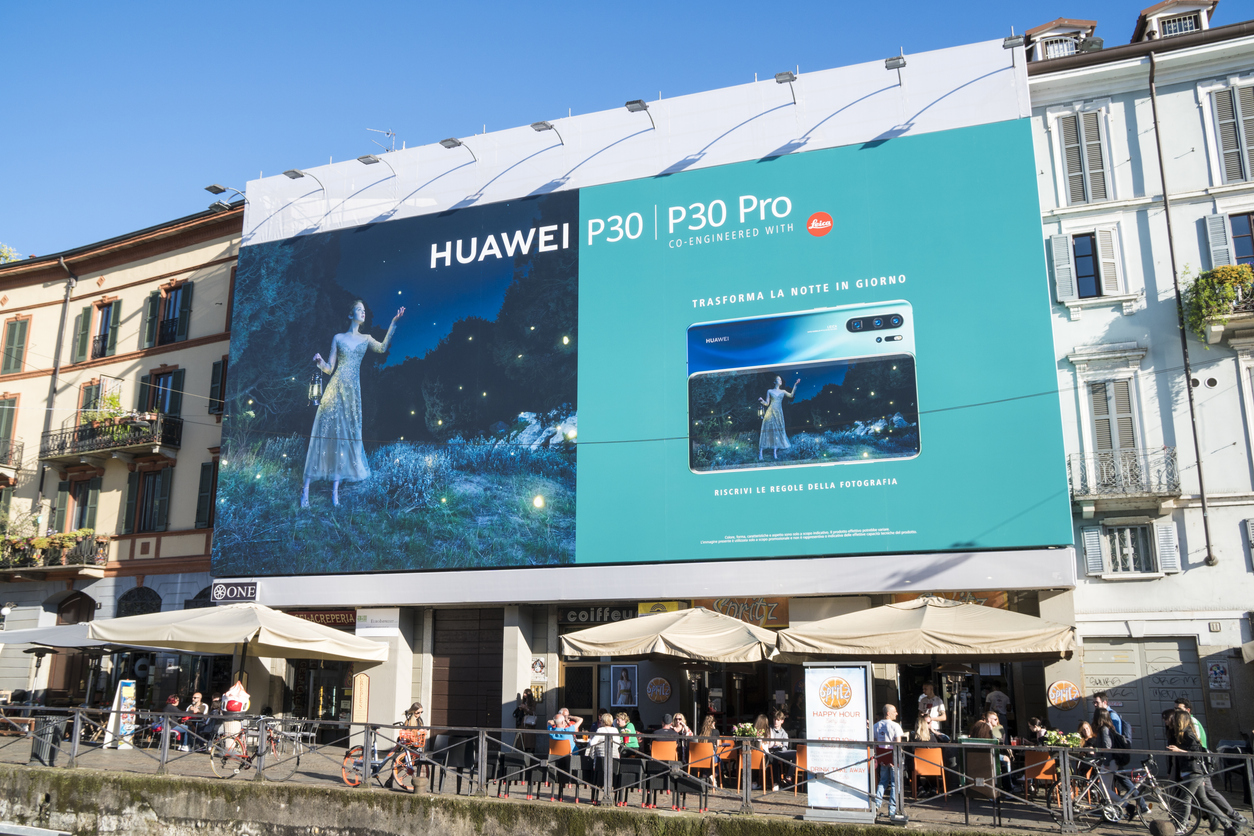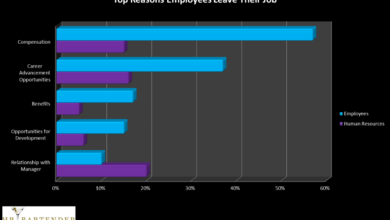
Data Security Fears Make Way to Huawei App Gallery
Data security fears make way to Huawei App Gallery, and it’s a conversation we need to have. For years, the dominance of Google Play and the App Store has shaped our expectations of app security. But with Huawei’s AppGallery gaining traction, concerns about data privacy and security naturally arise. This post dives into the heart of those concerns, examining Huawei’s security measures, user perceptions, and the broader geopolitical landscape that influences this evolving digital ecosystem.
We’ll explore the realities, address the anxieties, and look towards the future of app store security in a world with more choices.
We’ll be looking at Huawei’s specific security features, comparing them to industry giants, and exploring how user trust is built (or broken) in this increasingly competitive app market. We’ll also delve into the roles of app developers and the impact of global politics on data security perceptions. Get ready to unpack the complexities surrounding the Huawei AppGallery and the future of secure mobile app experiences.
Huawei AppGallery’s Security Measures
Concerns about data security are naturally prominent when considering alternative app stores. Huawei’s AppGallery aims to address these concerns head-on with a robust security framework designed to protect user data and provide a safe app ecosystem. This framework incorporates multiple layers of security, from app vetting to data encryption and privacy policies, all working in tandem to create a secure environment for users.
App Vetting and Security Scanning
The AppGallery employs a multi-layered app review process before apps are made available for download. This process includes static and dynamic analysis to identify potential malware, vulnerabilities, and privacy violations. Huawei’s security team rigorously examines each app’s code, functionality, and permissions requested. This approach is designed to prevent malicious apps from entering the ecosystem and helps maintain a high level of security for users.
This differs from simpler processes where only basic checks are conducted.
Data Encryption and User Privacy Policies
Huawei prioritizes data encryption both in transit and at rest. This means user data is protected during transmission to and from the AppGallery servers, as well as when stored on their servers. Their privacy policies are clearly articulated and readily accessible, detailing how user data is collected, used, and protected. Huawei actively works to comply with international data protection regulations such as GDPR and CCPA.
The company emphasizes transparency in its data handling practices.
Comparison with Google Play Store and Apple App Store
A direct comparison helps illustrate Huawei’s security approach within the broader context of the app store landscape. The following table highlights key differences and similarities:
| Feature | Huawei AppGallery | Google Play Store | Apple App Store |
|---|---|---|---|
| App Vetting Process | Multi-layered static and dynamic analysis, rigorous code review | Multi-stage review process with automated and manual checks | Strict review process with emphasis on user privacy and security |
| Data Encryption | Encryption in transit and at rest | Encryption in transit and at rest | Encryption in transit and at rest |
| User Privacy Policies | Clearly defined and accessible privacy policy, compliant with international regulations | Comprehensive privacy policy, subject to ongoing updates and regulatory changes | Detailed privacy policy with a focus on user control and transparency |
| Security Updates | Regular security updates and patches for the AppGallery platform itself | Regular security updates and patches for the Play Store platform | Regular security updates and patches for the App Store platform |
Compliance with International Data Protection Regulations
Huawei’s commitment to data privacy extends to its adherence to major international data protection regulations. For example, the company actively works to ensure compliance with the General Data Protection Regulation (GDPR) in Europe and the California Consumer Privacy Act (CCPA) in the United States. This commitment reflects a broader understanding of the global landscape of data privacy and the responsibilities that come with handling user data.
This commitment is crucial for building user trust and maintaining a secure app ecosystem.
User Perceptions and Trust: Data Security Fears Make Way To Huawei App Gallery
Building trust in an alternative app store like Huawei’s AppGallery is crucial for its success. Users accustomed to established platforms like Google Play Store have ingrained perceptions about security and app quality. Overcoming these preconceived notions requires a multifaceted approach focusing on transparency, security demonstrability, and proactive communication. This involves addressing specific anxieties users might have about data privacy and app authenticity within a new ecosystem.The factors influencing user trust in Huawei AppGallery primarily revolve around data security concerns, app quality assurance, and the overall user experience.
Users are naturally wary of sharing personal information with a relatively newer platform, especially given the geopolitical climate surrounding Huawei. Concerns about potential government access to user data, the availability of familiar apps, and the potential for malware are all significant barriers to adoption. The perception of app quality, including the presence of verified apps and the absence of malicious software, also plays a vital role.
A seamless and intuitive user experience further enhances trust; a confusing or difficult-to-navigate interface can erode confidence.
Addressing User Anxieties Regarding Data Security
Huawei addresses user anxieties through a multi-pronged strategy focusing on transparency and security certifications. They highlight their rigorous app review process, designed to detect and prevent malicious apps from entering the AppGallery. Publicly available information on their security measures, including encryption protocols and data handling practices, aims to build confidence. Furthermore, obtaining independent security certifications from reputable organizations lends credibility to their claims.
The emphasis on data privacy and user control over their data is also critical. For example, Huawei could prominently display its adherence to international data privacy standards like GDPR and CCPA, demonstrating a commitment to user rights.
Marketing Strategies to Build User Confidence
Effective marketing campaigns should focus on directly addressing user concerns. Huawei could leverage testimonials from satisfied users, emphasizing positive experiences and highlighting the security features of the AppGallery. Collaborating with independent security experts to conduct audits and publish reports on the AppGallery’s security posture would significantly enhance credibility. Transparent communication about data handling practices, including clear and concise privacy policies, is essential.
Marketing materials could showcase the rigorous app review process, emphasizing the measures taken to ensure app safety and quality. Finally, offering attractive incentives, such as exclusive app deals or loyalty programs, could encourage users to explore and adopt the AppGallery. For instance, a campaign featuring a prominent security expert endorsing the platform’s security protocols could significantly improve public perception.
This campaign could involve video testimonials, social media promotions, and partnerships with trusted technology news outlets.
App Developer Security Practices within the Huawei AppGallery
Building a secure app ecosystem requires a collaborative effort, and app developers play a crucial role in ensuring user data remains protected within the Huawei AppGallery. Their commitment to robust security practices directly impacts user trust and the overall health of the platform. By adhering to best practices, developers contribute to a safer environment for both users and the AppGallery itself.App developers are responsible for safeguarding user data throughout the entire application lifecycle, from design and development to deployment and updates.
They are the first line of defense against potential vulnerabilities and data breaches. Their active participation in security measures significantly reduces risks, fosters user confidence, and strengthens the reputation of the Huawei AppGallery.
Best Practices for Data Security in Huawei AppGallery Apps
Secure coding practices are paramount. This involves using secure libraries, regularly updating dependencies, and implementing robust input validation to prevent injection attacks. It’s also crucial to encrypt sensitive data both in transit (using HTTPS) and at rest (using encryption algorithms like AES). Regular security audits and penetration testing should be conducted to proactively identify and address vulnerabilities before they can be exploited.
Furthermore, developers should follow the principle of least privilege, granting only necessary permissions to the app. This minimizes the potential impact of any compromise.
The Developer’s Role in Mitigating Data Security Risks
Developers must prioritize data minimization, collecting only the data absolutely necessary for the app’s functionality. They should also clearly inform users about what data is being collected, how it’s used, and with whom it might be shared (if applicable), adhering to relevant privacy regulations like GDPR. Implementing robust authentication and authorization mechanisms is essential to prevent unauthorized access.
Multi-factor authentication, where available, should be encouraged. Finally, developers should have a clear incident response plan in place to handle any security breaches promptly and effectively. This includes notifying users and relevant authorities as needed.
App Developer Security Checklist for Huawei AppGallery
Before releasing an app on the Huawei AppGallery, developers should carefully review this checklist:
- Data Minimization: Does the app collect only the strictly necessary data? Is there a clear data minimization strategy in place?
- Secure Coding Practices: Has the app been developed using secure coding principles, including input validation, output encoding, and the use of secure libraries?
- Data Encryption: Is sensitive data encrypted both in transit (using HTTPS) and at rest (using strong encryption algorithms)?
- Authentication and Authorization: Does the app use robust authentication and authorization mechanisms, ideally including multi-factor authentication where appropriate?
- Permission Management: Does the app request only the minimum necessary permissions? Are all permissions clearly explained to the user?
- Regular Security Testing: Has the app undergone regular security testing, including penetration testing and vulnerability assessments?
- Privacy Policy Compliance: Does the app have a clear and comprehensive privacy policy that complies with all relevant regulations (e.g., GDPR, CCPA)?
- Incident Response Plan: Does the developer have a well-defined incident response plan in place to handle security breaches effectively?
- Regular Updates: Is there a plan for regular updates to address security vulnerabilities and improve the app’s security posture?
- Huawei AppGallery Security Guidelines Adherence: Has the developer fully reviewed and adhered to all Huawei AppGallery security guidelines and best practices?
Geopolitical Influences and Data Security Concerns
The rise of Huawei’s AppGallery has been intertwined with significant geopolitical tensions, particularly concerning data security and national sovereignty. User perceptions of the platform’s security are heavily influenced by the ongoing diplomatic and trade disputes involving China, and these perceptions vary considerably depending on a user’s location and national context. Understanding this complex interplay is crucial to assessing the AppGallery’s long-term prospects.The regulatory landscape surrounding data security differs dramatically across the globe.
Countries like the US have implemented stringent regulations and imposed restrictions on Huawei’s participation in certain sectors, citing national security concerns related to data access and potential Chinese government influence. Conversely, other nations, particularly those with closer ties to China, have adopted a more lenient approach, often prioritizing economic cooperation over stringent data security protocols. This creates a challenging environment for Huawei, forcing them to adapt their security practices and messaging to suit diverse regulatory frameworks and public opinions.
Varying Regulatory Environments and Their Impact
The contrasting regulatory environments present Huawei with a complex challenge. In some regions, they must adhere to stringent data localization laws, requiring them to store user data within the country’s borders. This adds significant infrastructural costs and complexity. In other regions, less stringent regulations might allow for more flexible data handling practices, but this could simultaneously raise concerns among users wary of potential data breaches or unauthorized government access.
The lack of global harmonization in data security regulations forces Huawei to navigate a fragmented and often contradictory landscape, requiring a sophisticated and regionally tailored approach to security assurance. For example, compliance with GDPR in Europe requires different security protocols and data handling procedures than those needed to meet the requirements in less regulated markets.
Challenges in Maintaining User Trust Across Geopolitical Contexts
Maintaining user trust is paramount for the success of any app store, and for Huawei, this challenge is magnified by the geopolitical context. Negative media coverage and government pronouncements in certain countries have fueled skepticism among potential users. Addressing these concerns requires a multi-pronged strategy. This includes transparently communicating Huawei’s data security practices, engaging in independent audits to demonstrate compliance with relevant regulations, and proactively cooperating with international standards bodies to build confidence.
Furthermore, proactively addressing user concerns through clear and accessible communication channels is crucial. For instance, public statements from Huawei executives directly addressing specific data security concerns in specific regions can build trust by demonstrating responsiveness and accountability. The ongoing need to demonstrate a commitment to data privacy and security independent of political pressures is critical to Huawei’s future success.
Future of Data Security in Alternative App Stores

The rise of alternative app stores like Huawei’s AppGallery presents both opportunities and challenges. While concerns around data security remain, significant advancements in technology offer pathways to enhance user trust and protection. The future of data security in these ecosystems hinges on proactive adoption of cutting-edge solutions and a collaborative effort between app developers, app store providers, and regulatory bodies.The current landscape of data security in alternative app stores is largely reactive, addressing vulnerabilities as they emerge.
However, a proactive approach, focusing on preventative measures and leveraging advanced technologies, will be crucial for building a more secure future. This shift necessitates a paradigm change, moving from a model of patching vulnerabilities to one of inherent security built into the system’s foundation.
Enhanced Cryptographic Techniques, Data security fears make way to huawei app gallery
Implementing stronger encryption algorithms, such as post-quantum cryptography, will be vital. Post-quantum cryptography is designed to withstand attacks from quantum computers, which pose a significant threat to current encryption standards. This means user data, even if intercepted, would remain unreadable, significantly enhancing privacy. Furthermore, advancements in homomorphic encryption, allowing computations on encrypted data without decryption, could revolutionize data processing while preserving confidentiality.
Growing data security fears are pushing users towards alternative app stores, like Huawei’s AppGallery. This shift highlights the need for robust app development solutions, and that’s where platforms like Domino come in; check out this great article on domino app dev the low code and pro code future to see how they’re changing the game. Ultimately, the demand for secure and reliable apps will drive innovation in both app stores and development methodologies, continuing to shape the future of Huawei’s AppGallery and beyond.
Imagine a scenario where a financial app can process transactions on encrypted data, ensuring no sensitive information is ever exposed during processing. This approach could become a standard for secure data handling within alternative app stores.
Federated Learning and Differential Privacy
Federated learning allows machine learning models to be trained on decentralized data, minimizing the need to collect and centralize sensitive user information. This approach protects user privacy while still allowing for the development of intelligent and personalized app experiences. Differential privacy adds another layer of protection by adding carefully calibrated noise to the data, making it difficult to identify individual users while preserving the overall statistical properties of the dataset.
So, data security fears are driving users towards the Huawei App Gallery, seeking alternatives to potentially less secure app stores. This increased focus on security highlights the importance of robust cloud security solutions, like those offered by Bitglass, as discussed in this insightful article on bitglass and the rise of cloud security posture management. Ultimately, the shift to Huawei’s app gallery underscores the growing demand for better data protection in a world of increasing cyber threats.
For example, an app could analyze user preferences to personalize recommendations without revealing the specific preferences of any single user. This technique offers a powerful combination with federated learning, bolstering the overall security and privacy of user data.
Blockchain Technology Integration
Blockchain’s immutable ledger could be leveraged to create a transparent and auditable system for app vetting and data management. Each app’s security practices and data handling procedures could be recorded on a blockchain, creating a verifiable record that users and regulators can access. This enhanced transparency would build trust and accountability within the ecosystem. Furthermore, blockchain could be used to secure user consent and data access, ensuring that only authorized parties can access specific data points, with a clear and immutable record of every access attempt.
This could dramatically improve user control over their personal information.
Hypothetical Scenario: A Secure Future for Alternative App Stores
Imagine a future where all apps in an alternative app store are vetted through a blockchain-based system, utilizing post-quantum encryption and employing federated learning with differential privacy for data analysis. Users have granular control over their data, with transparent and auditable records of every data access request. Apps are designed with inherent security features, and any attempts to breach these measures are immediately flagged and investigated.
This hypothetical scenario showcases a future where data security concerns are significantly mitigated, leading to increased user trust and the flourishing of alternative app stores as secure and reliable platforms.
Case Studies
Examining successful security initiatives from various tech companies offers valuable insights into bolstering the security of app stores like Huawei’s AppGallery. By analyzing these successes, we can identify common strategies and apply the lessons learned to enhance the overall security posture. This examination will focus on specific examples, highlighting key elements contributing to their effectiveness.Successful security initiatives often share common traits, such as a proactive approach to threat detection, robust security architecture, and a commitment to continuous improvement.
A multi-layered approach is frequently employed, encompassing various security measures to create a robust defense system against potential threats. This involves not only technological solutions but also strong collaboration between developers, app stores, and users.
Google Play Protect’s Multi-Layered Security
Google Play Protect exemplifies a successful multi-layered security approach. It employs a combination of static and dynamic analysis to detect malicious apps before and after installation. This includes scanning apps for known malware signatures, analyzing their behavior in a sandboxed environment, and leveraging machine learning to identify suspicious patterns.
Google Play Protect uses a combination of static and dynamic analysis, machine learning, and user feedback to identify and remove malicious apps. This multi-layered approach significantly reduces the risk of users downloading harmful software.
The success of Google Play Protect stems from its continuous improvement, incorporating user feedback and adapting to evolving threats. This ongoing evolution is crucial in maintaining a high level of security in a constantly changing threat landscape. The integration of user reporting mechanisms allows for rapid responses to emerging threats, enhancing the overall effectiveness of the system.
Apple’s App Store Review Process
Apple’s rigorous app review process serves as another example of a successful security initiative. Before an app is published, it undergoes a thorough review by Apple’s team of experts, examining various aspects of the app’s functionality and security. This process includes checking for compliance with Apple’s guidelines, identifying potential security vulnerabilities, and assessing the app’s overall quality.
Apple’s strict app review process involves a thorough examination of each app’s code, functionality, and security measures, ensuring adherence to strict guidelines before approval. This process acts as a crucial first line of defense against malicious apps.
The success of Apple’s approach lies in its combination of automated and manual reviews, supplemented by robust security guidelines. This layered approach allows for the detection of a wide range of vulnerabilities, from simple coding errors to sophisticated exploits. The strict enforcement of these guidelines ensures a higher level of security for users.
Lessons Learned and Application to Huawei AppGallery
The success of Google Play Protect and Apple’s App Store review process highlights the importance of a multi-layered security approach, incorporating automated tools, manual review, and continuous improvement. These elements, when combined effectively, can significantly enhance the security of an app store.To improve the Huawei AppGallery’s data security, adopting a similar multi-layered approach would be beneficial. This could involve enhancing automated security scanning, implementing a more rigorous app review process, and actively incorporating user feedback to address emerging threats.
Furthermore, fostering strong relationships with developers and promoting secure coding practices will play a crucial role in strengthening the overall security of the ecosystem.
Final Review

Ultimately, the success of the Huawei AppGallery hinges on effectively addressing data security concerns. While challenges remain, Huawei’s commitment to transparency, robust security protocols, and continuous improvement is crucial. The future of alternative app stores depends on building and maintaining user trust through proactive measures and a commitment to data protection. The conversation is ongoing, but the journey towards a more secure mobile experience is one worth pursuing.
The shift in the app market presents both opportunities and challenges – let’s see how this unfolds.
Quick FAQs
What specific encryption methods does Huawei AppGallery use?
Huawei employs various encryption methods, including AES and RSA, but the specifics often depend on the app and the data being transmitted. They are generally comparable to industry standards.
How does Huawei verify apps submitted to the AppGallery?
Huawei’s app vetting process involves multiple checks for malware, vulnerabilities, and compliance with their guidelines. The exact details are not publicly available for security reasons, but it’s a multi-layered approach.
What happens if I suspect an app in the AppGallery is compromising my data?
Huawei provides reporting mechanisms to flag suspicious apps. You should report it immediately and uninstall the app. They investigate reported issues and take action accordingly.
Is my data stored on Huawei servers subject to Chinese laws?
This is a complex legal question and depends on the app and the data involved. Huawei’s data storage practices and compliance with international laws are areas of ongoing discussion and scrutiny.





